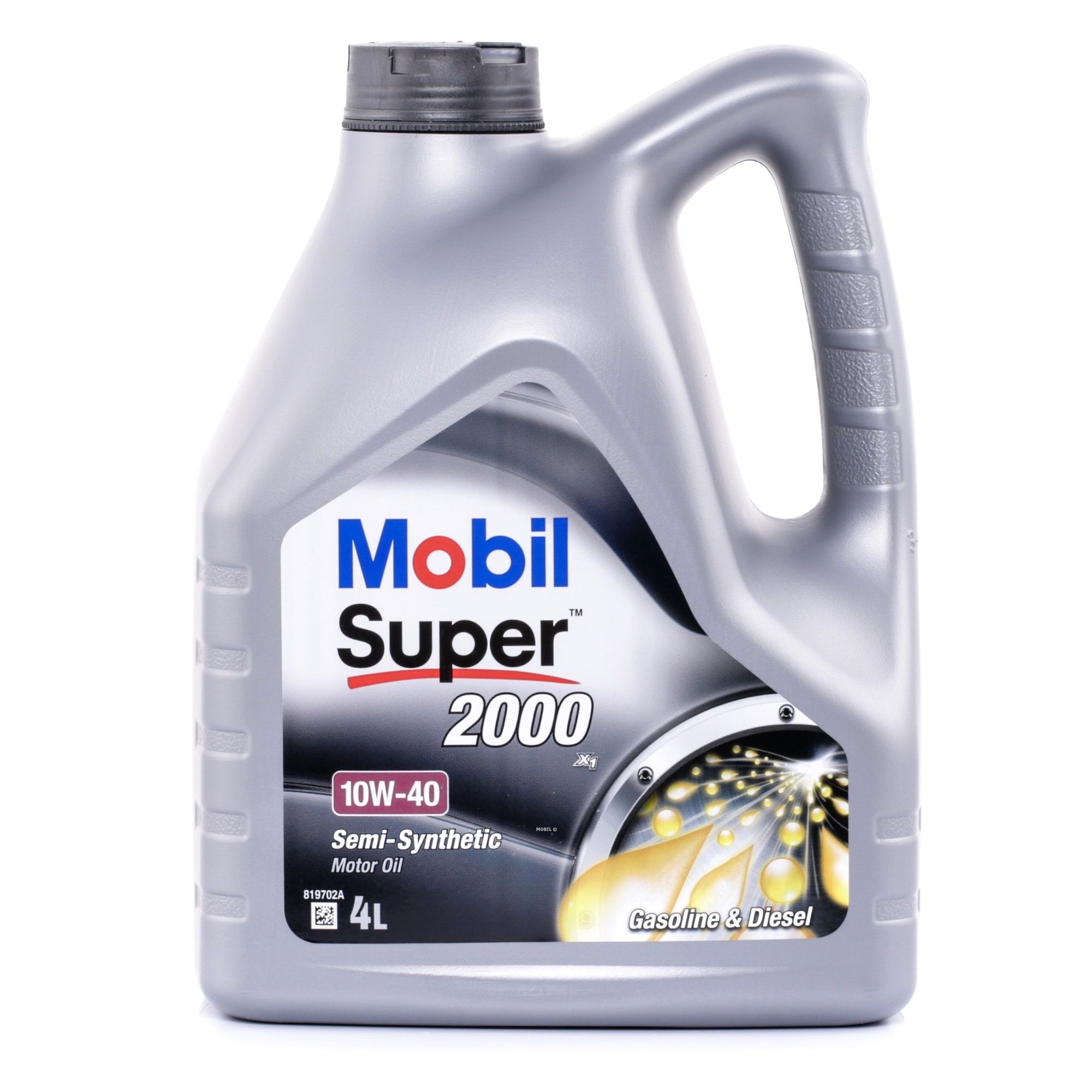Mercedes-Benz C-Class engines
Since its launch in 1993, the Mercedes-Benz C-Class has established itself as one of the most successful mid-size sedans, offering an impressive variety of engines across five generations. From the robust M104 six-cylinder engines of the first generation to the ultra-modern mild hybrid drives of the current W206 generation, the Mercedes-Benz C-Class engine range reflects the continuous technological evolution of the Stuttgart-based car manufacturer.

Mercedes-Benz C-Class Generation I (1993-2000)
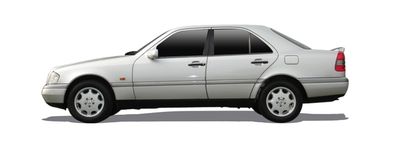
The first Mercedes-Benz C-Class generation (W202) established the model series as a worthy successor to the 190 series and was characterized by exceptionally robust engines. With proper maintenance, mileage easily reached 400,000 to 500,000 kilometers - a performance rarely achieved by modern Mercedes-Benz C-Class engines. Major repairs were usually only necessary after 250,000 to 300,000 kilometers, with the automatic transmissions often capitulating to the engines. The absolute top engine of this generation was the C 280 with the legendary M104 six-cylinder engine, which perfectly embodied reliability, smooth running and durability. The W202 successfully positioned itself against the BMW 3 Series and Audi A4, with engine quality providing the decisive advantage.
Mercedes-Benz C-Class petrol engines: Generation I (1993-2000)
The Mercedes-Benz C-Class petrol engine range mainly comprised four and six-cylinder engines without turbocharging. The entry-level C 180 had a 1.8-liter four-cylinder engine (M111) with 90 kW (122 hp), which proved to be economical and reliable. The C 200 used the same engine with 100 kW (136 hp). The six-cylinder engines formed the top class: the C 220 with a 2.2-liter engine (M111) produced 110 kW (150 hp), while the C 280 with the legendary 2.8-liter M104 engine offered 142 kW (193 hp). These Mercedes-Benz C-Class engines were considered virtually indestructible - the M104 developed into the most reliable engine in the entire history of the C-Class. Problems were mostly limited to wearing parts such as ignition coils or engine mounts after extreme mileage.
Mercedes-Benz C-Class diesel engines: Generation I (1993-2000)
The C 250 Diesel with the 2.5-liter five-cylinder engine (OM605) and 83 kW (113 hp) dominated the Mercedes-Benz C-Class diesel range. This Mercedes-Benz C-Class engine proved to be extremely durable and economical, regularly reaching over 500,000 kilometers and consuming only 6.5-7.0 liters per 100 km. The characteristic five-cylinder sound and high reliability made it a favorite among frequent drivers. The C 220 Diesel with a 2.2-liter four-cylinder engine (OM604) and 70 kW (95 hp) was added later, which was quieter but did not achieve the mileage of the five-cylinder engine.
| Mercedes-Benz C-Class engine |
Power output |
Fuel consumption |
Typical weaknesses |
Rating |
| C 180 (M111) |
122 HP |
8.5-9.2 l/100km |
Very robust, occasional ignition coils |
Very good |
| C 200 (M111) |
136 HP |
8.8-9.5 l/100km |
Very robust, occasional ignition coils |
Very good |
| C 220 (M111) |
150 HP |
9.2-9.8 l/100km |
Very robust, rarely engine mounts |
Very good |
| C 280 (M104) |
193 HP |
10.1-10.8 l/100km |
Practically indestructible |
Very good |
| C 220 Diesel (OM604) |
95 HP |
6.8-7.3 l/100km |
Robust, but louder |
Good |
| C 250 Diesel (OM605) |
113 HP |
6.5-7.0 l/100km |
Extremely durable |
Very good |

Mercedes-Benz C-Class Generation II (2000-2007)
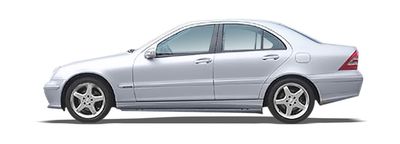
The second Mercedes-Benz C-Class generation (W203) marked the transition to modern engine technology and brought compressor and common rail technology to the model series for the first time. Mileage dropped to between 250,000 and 350,000 kilometers, with the compressor engines often requiring costly repairs to the compressor or clutch between 150,000 and 200,000 kilometers. The new common-rail diesels proved to be less durable than their predecessors, but still reached a respectable 300,000 kilometers. The absolute highlight was the C 32 AMG with its hand-built V6 supercharged engine - a technical masterpiece with 260 kW (354 hp). The W203 battled against fiercer competition from the BMW E46 and Audi A4 B6, with the variety of engines providing the decisive advantage.
Mercedes-Benz C-Class petrol engines: Generation II (2000-2007)
The Mercedes-Benz C-Class petrol engine range was revolutionized with compressor technology. The C 180 started with a 1.8-liter compressor (M271) and 105 kW (143 hp), while the C 200 Kompressor produced 120 kW (163 hp) from the same engine. These Mercedes-Benz C-Class engines suffered from typical compressor problems: Magnetic clutches wore out after 120,000-180,000 km, compressor belts frequently snapped. The C 230 Kompressor with 141 kW (192 hp) and the C 320 with 160 kW (218 hp) from the tried-and-tested V6 engine (M112) proved to be more reliable. The C 55 AMG topped the range with 270 kW (367 hp) from a 5.5-liter V8, although this was rare.
Mercedes-Benz C-Class diesel engines: Generation II (2000-2007)
The Mercedes-Benz C-Class diesels switched to modern common-rail technology. The C 200 CDI with 2.2-liter four-cylinder (OM646) produced 90 kW (122 hp), the C 220 CDI 110 kW (150 hp) from the same engine. These Mercedes-Benz C-Class engines were significantly quieter than their predecessors, but more susceptible to injector problems and particulate filter blockages. The C 270 CDI with 2.7-liter five-cylinder (OM612) and 125 kW (170 hp) developed into the most reliable diesel of this generation, while the C 320 CDI with 3.0-liter V6 (OM642) and 165 kW (224 hp) was powerful but complex.
| Mercedes-Benz C-Class engine |
Power output |
Fuel consumption |
Typical weaknesses |
Rating |
| C 180 Compressor (M271) |
143 HP |
7.8-8.5 l/100km |
Compressor clutch, belt |
Average |
| C 200 Compressor (M271) |
163 HP |
8.2-8.8 l/100km |
Compressor clutch, belt |
Average |
| C 230 Compressor (M271) |
192 HP |
8.8-9.4 l/100km |
Compressor clutch, intake manifold |
Moderate |
| C 320 (M112) |
218 HP |
9.5-10.2 l/100km |
Robust, occasional ignition coils |
Good |
| C 200 CDI (OM646) |
122 HP |
5.8-6.4 l/100km |
Injectors, particulate filter |
Average |
| C 220 CDI (OM646) |
150 HP |
6.0-6.6 l/100km |
Injectors, particulate filter |
Average |
| C 270 CDI (OM612) |
170 HP |
6.2-6.8 l/100km |
Robust, proven |
Good |
| C 320 CDI (OM642) |
224 HP |
6.8-7.4 l/100km |
Complex, but powerful |
Good |

Mercedes-Benz C-Class Generation III (2007-2014)
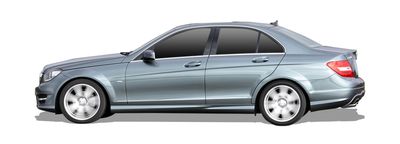
The third Mercedes-Benz C-Class generation (W204) brought a complete engine revolution with direct-injection petrol engines and state-of-the-art diesels. Mileage stabilized again at 250,000 to 400,000 kilometers, although the new CGI engines initially struggled with direct injection problems. The diesel engines achieved greater reliability again with the revised OM engines. The absolute top engine was the C 63 AMG with its 6.2-liter V8 and 336 kW (457 hp) - an atmospheric naturally aspirated engine of the old school. The W204 successfully positioned itself against the BMW E90 and Audi A4 B8, with the engine variety and quality offering decisive advantages.
Mercedes-Benz C-Class petrol engines: Generation III (2007-2014)
The Mercedes-Benz C-Class petrol engine range was based entirely on direct injection (CGI technology). The C 180 CGI with 1.8-liter supercharger (M271) produced 115 kW (156 hp), the C 200 CGI 135 kW (184 hp). These Mercedes-Benz C-Class engines initially suffered from problems with coking intake valves and defective high-pressure pumps. The C 250 CGI with 1.8-liter turbo (M271) and 150 kW (204 hp) proved to be problematic due to frequent turbocharger damage. The V6 engines were more reliable: the C 300 with 3.0-liter V6 (M272) produced 170 kW (231 hp) and the C 350 190 kW (272 hp). The C 63 AMG with its 6.2-liter V8 (M156) and 336 kW (457 hp) developed into the most legendary engine of this generation.
Mercedes-Benz C-Class diesel engines: Generation III (2007-2014)
The Mercedes-Benz C-Class diesels used further developed common-rail engines. The C 200 CDI with 2.1-liter four-cylinder (OM646) produced 100 kW (136 hp), the C 220 CDI 125 kW (170 hp) from the same engine. These Mercedes-Benz C-Class engines showed significantly improved reliability compared to their predecessors. The C 250 CDI with 2.1-liter four-cylinder (OM651) and 150 kW (204 hp) developed into the best diesel of this generation - economical, powerful and durable. The C 300 CDI and C 350 CDI with 3.0-liter V6 (OM642) offered 150 kW (204 hp) and 170 kW (231 hp) respectively and were regarded as reliable touring engines.
| Mercedes-Benz C-Class engine |
Power output |
Fuel consumption |
Typical weaknesses |
Rating |
| C 180 CGI (M271) |
156 HP |
7.2-7.8 l/100km |
Valve coking, high-pressure pump |
Average |
| C 200 CGI (M271) |
184 HP |
7.5-8.1 l/100km |
Valve coking, high-pressure pump |
Average |
| C 250 CGI (M271) |
204 HP |
8.0-8.6 l/100km |
Turbocharger damage, coking |
Moderate |
| C 300 (M272) |
231 HP |
8.8-9.4 l/100km |
Robust, occasional engine mounts |
Good |
| C 350 (M272) |
272 HP |
9.2-9.8 l/100km |
Robust, occasional engine mounts |
Good |
| C 63 AMG (M156) |
457 HP |
12.1-13.5 l/100km |
Very robust, legendary |
Very good |
| C 200 CDI (OM646) |
136 HP |
5.2-5.8 l/100km |
Improved reliability |
Good |
| C 220 CDI (OM646) |
170 HP |
5.4-6.0 l/100km |
Improved reliability |
Good |
| C 250 CDI (OM651) |
204 HP |
5.1-5.7 l/100km |
Very reliable and economical |
Very good |
| C 300/350 CDI (OM642) |
204/231 HP |
5.8-6.4 l/100km |
Reliable touring engines |
Good |

Mercedes-Benz C-Class Generation IV (2014-2021)
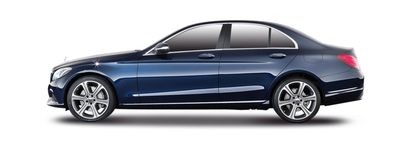
The fourth Mercedes-Benz C-Class generation (W205) revolutionized engine technology with turbocharging throughout and hybrid drives available for the first time. Mileage varied greatly: while the smaller four-cylinder turbos reached 200,000 to 300,000 kilometers with proper maintenance, the powerful AMG engines often required costly repairs after just 100,000 to 150,000 kilometers. The new 9G-Tronic automatic transmissions proved to be significantly more reliable than their predecessors. The absolute top engine was the C 63 S AMG with its 4.0-liter V8 biturbo and 375 kW (510 hp) - a masterpiece of engine technology. The W205 battled against the fiercest competition of all time with the BMW F30 and Audi A4 B9, with the engine variety and efficiency offering decisive advantages.
Mercedes-Benz C-Class petrol engines: Generation IV (2014-2021)
The Mercedes-Benz C-Class petrol engine range relied entirely on turbocharging. The C 180 with 1.6-liter turbo (M274) produced 115 kW (156 hp), the C 200 135 kW (184 hp) from the same engine. These Mercedes-Benz C-Class engines proved to be economical and refined, but occasionally suffered from problems with the timing chain after 120,000-180,000 km. The C 250 with 2.0-liter turbo (M274) and 155 kW (211 hp) developed into the most balanced engine of this generation. The AMG models C 43 AMG with 3.0-liter V6 biturbo (M276) and 270 kW (367 hp) and the C 63 AMG with 4.0-liter V8 biturbo (M177) and up to 375 kW (510 hp) offered extreme performance, but were susceptible to turbocharger damage when driven in a sporty manner.
Mercedes-Benz C-Class diesel engines: Generation IV (2014-2021)
The Mercedes-Benz C-Class diesels used the new OM654 engine family with aluminum housing. The C 200 d with 2.0-liter four-cylinder produced 100 kW (136 hp), the C 220 d 125 kW (170 hp) from the same engine. These Mercedes-Benz C-Class engines were regarded as the cleanest and most efficient diesels in the brand's history, meeting the Euro 6d-Temp standard and consuming just 4.2-4.8 liters per 100 km. The C 250 d with 150 kW (204 hp) and the C 300 d with 180 kW (245 hp) developed into the most reliable engines of this generation. Problems were mostly limited to the complex exhaust gas aftertreatment with AdBlue system.
Mercedes-Benz C-Class hybrid drive: Generation IV (2014-2021)
From 2019, a Mercedes-Benz C-Class plug-in hybrid (C 300 e) with 235 kW (320 hp) system output was offered for the first time. This combined a 2.0-liter turbo with a 90 kW electric motor and offered an electric range of up to 57 kilometers. The Mercedes-Benz C-Class Hybrid proved to be technically mature, but complex to maintain.
| Mercedes-Benz C-Class engine |
Power output |
Fuel consumption |
Typical weaknesses |
Rating |
| C 180 (M274) |
156 HP |
6.4-7.0 l/100km |
Occasional timing chain |
Good |
| C 200 (M274) |
184 HP |
6.6-7.2 l/100km |
Occasionally Timing chain |
Good |
| C 250 (M274) |
211 HP |
6.8-7.4 l/100km |
Balanced and reliable |
Very good |
| C 43 AMG (M276) |
367 HP |
8.4-9.0 l/100km |
Turbocharger damage with Sport |
Average |
| C 63 AMG (M177) |
476-510 HP |
10.7-12.1 l/100km |
Turbocharger damage, complex |
Moderate |
| C 200 d (OM654) |
136 HP |
4.2-4.6 l/100km |
Very economical and clean |
Very good |
| C 220 d (OM654) |
170 HP |
4.4-4.8 l/100km |
Very economical and clean |
Very good |
| C 250 d (OM654) |
204 HP |
4.6-5.0 l/100km |
Reliable and efficient |
Very good |
| C 300 d (OM654) |
245 HP |
4.8-5.2 l/100km |
Powerful and economical |
Very good |
| C 300 e Hybrid |
320 HP |
1.6 l/100km + electricity |
Complex, but mature |
Good |

Mercedes-Benz C-Class Generation V (2021-today)

The current Mercedes-Benz C-Class generation (W206) relies entirely on electrification and represents Mercedes-Benz' vision for the future of the mid-size class. All engines feature 48-volt mild hybrid technology or are designed as plug-in hybrids. As the generation has only been on the market since 2021, there is no long-term experience yet, but the first 50,000 kilometers show promising approaches. The top-of-the-range engine is the C 63 S E Performance with 500 kW (680 hp) system output from a 2.0-liter turbo and electric motor - a revolutionary approach for AMG. The mild hybrid technology promises a service life of over 300,000 kilometers, as the electric assistance relieves the combustion engine. The W206 competes against the BMW G20 and Audi A4 B9 facelift with a focus on efficiency and technology.
Mercedes-Benz C-Class mild hybrid petrol engine: Generation V (2021-today)
Two 1.5-liter turbo engines (M254) with 48-volt mild hybrid technology form the basis of the Mercedes-Benz C-Class engine range. The C 180 delivers 125 kW (170 hp), the C 200 150 kW (204 hp). Both Mercedes-Benz C-Class engines have an integrated starter-alternator and cylinder deactivation. The C 300 with 2.0-liter turbo (M254) and 190 kW (258 hp) is developing into the most balanced engine of this generation - it offers smooth power delivery and has so far been free of major series production problems.
Mercedes-Benz C-Class plug-in hybrids: Generation V (2021-today)
The Mercedes-Benz C-Class plug-in hybrids offer system outputs ranging from 230 kW (313 hp) in the C 300 e to 500 kW (680 hp) in the C 63 S E Performance. These Mercedes-Benz C-Class engines combine 2.0-liter turbo engines with powerful electric motors and achieve electric ranges of up to 100 kilometers. The C 63 S E Performance revolutionizes the AMG concept with its 2.0-litre turbo and 150 kW electric motor - technically fascinating, but extremely complex.
Mercedes-Benz C-Class diesel engines: Generation V (2021-today)
The Mercedes-Benz C-Class diesels continue the proven OM654 family with mild hybrid technology. The C 200 d with 2.0-liter four-cylinder delivers 125 kW (170 hp), the C 220 d 147 kW (200 hp) from the same engine. These Mercedes-Benz C-Class engines are regarded as the cleanest and most efficient diesels in the brand's history and meet the Euro 6d standard with minimal AdBlue consumption.
| Mercedes-Benz C-Class engine |
Power output |
Fuel consumption |
Typical weaknesses |
Rating |
| C 180 (M254) |
170 HP |
6.6-7.2 l/100km |
No series problems so far |
Very good |
| C 200 (M254) |
204 HP |
6.8-7.4 l/100km |
No series problems so far |
Very good |
| C 300 (M254) |
258 HP |
7.2-7.8 l/100km |
Balanced and modern |
Very good |
| C 200 d (OM654) |
170 HP |
4.8-5.2 l/100km |
Very economical with mild hybrid |
Very good |
| C 220 d (OM654) |
200 HP |
5.0-5.4 l/100km |
Powerful and efficient |
Very good |
| C 300 e Hybrid |
313 HP |
0.6-0.8 l/100km + electricity |
Complex, but highly efficient |
Good |
| C 63 S E Performance |
680 HP |
6.9 l/100km + electricity |
Revolutionary, but very complex |
Average |

Conclusion: The best Mercedes-Benz C-Class engines of all generations
The development of the Mercedes-Benz C-Class engines shows a clear trend: while the early generations impressed with their extreme durability and simplicity, the modern engines offer greater efficiency and performance with increased complexity. The diesels have remained reliable long-distance partners across all generations, while the petrol engines have undergone a transformation from robust naturally aspirated engines to highly efficient turbocharged engines. The new mild-hybrid technology of the fifth generation promises an optimum balance between performance, efficiency and reliability.
- Best Mercedes-Benz C-Class gasoline engine:
The C 280 (M104, Generation I) remains unmatched in terms of durability and reliability, while the modern C 300 (M254, Generation V) offers the best combination of efficiency and performance.
- Best Mercedes-Benz C-Class diesel engine:
The C 250 CDI (OM651, Generation III) and the C 220 d (OM654, Generation IV & V) share the title as the most reliable and economical diesel in C-Class history.
- Best Mercedes-Benz C-Class hybrid engine:
The C 300 e (Generation V) with its high electric range of up to 100 km and low fuel consumption of less than 1 liter per 100 km in hybrid mode.
For maintenance and spare parts for all Mercedes-Benz C-Class generations, AUTODOC offers a comprehensive range of original and quality spare parts with fast delivery and expert advice.









